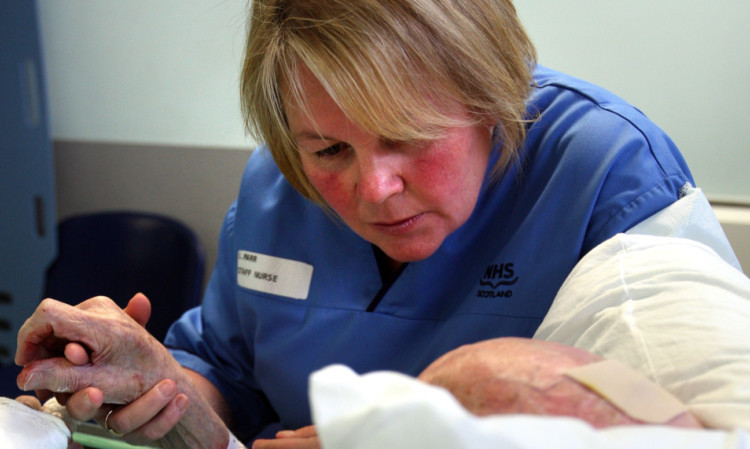Emergency staff at NHS Tayside are the first in Britain to be given advanced training in spotting the signs of dementia.
The training is seen as essential for the “front of house” staff, as the Tayside region has at least 8,025 confirmed cases of dementia.
Accident and emergency nurses were yesterday awarded certificates after completing the revolutionary Best Practice in Dementia Care Module, designed by Stirling University.
The radical initiative takes emergency consultants and nurses from Ninewells and Perth Royal Infirmary and “upskills” them in dementia care, meaning they can quickly recognise the signs of dementia.
Experts say this is essential to ensure dementia suffers are given the appropriate care.
In December, a Courier investigation revealed that the economic cost of patient care for dementia sufferers reaches more than £20 billion, while the average annual cost per dementia patient is more than £25,000 a year.
Andy Shewan, the NHS Tayside consultant nurse for dementia, said the ability of nurses to identify dementia quickly would greatly improve long term care.
“Accident and emergency is an area of high importance to the hospital and it is intended that nurses working there can identify dementia sufferers.
“This is essential as it greatly improves the outcomes of dementia sufferers, ensuring they can get the best treatment quickly.”
Mr Shewan said the nurses had been trained in how to identify symptoms of dementia, which can often be difficult, as well as how to treat them.
Dr Margaret McGuire, nurse director for NHS Tayside, said: “This is all about the patients.
“Accident and emergency nurses need to be the first people to notice that something is not right. It is very important to get the front of house right.”
Ultimately, it is hoped 27 accident and emergency nurses will complete the module and share their knowledge with colleagues at both Ninewells and Perth Royal Infirmary, before taking the practice to the rest of the country.
Mary Cumming, the charge nurse in Perth responsible for implementing the module, said completing the course was the start of an “exciting time” for NHS Tayside.
She said: “We are greatly looking forward to marketing the module in the area and the rest of Scotland. This is an exciting time. There is so much drive and enthusiasm. The nurses are all really keen.”
